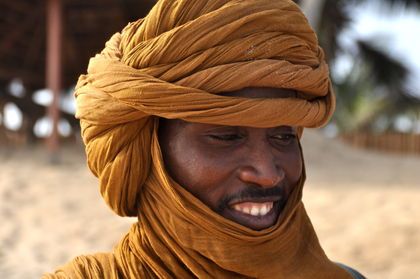Mali - Ethnic groups

The main ethnic groups of Mali are the Mande, including the Bambara, Malinke, and Sarakole, accounting for 50% of the total population. Other groups include the Peul (or Fulani), accounting for 17%; the Voltaic, making up 12%; the Songhai, constituting 6%; the Tuareg and Moor 10%; and other groups 5%. The Bambara, mostly farmers, occupy all of central Mali bounded by the Côte d'Ivoire frontier in the south and Nara and Nioro in the north. Malinke live chiefly in the regions of Bafoulabé, Kita, and Bamako. The Peul (or Fulani), semi-sedentary herdsmen, are to be found throughout the republic, but mainly in the region of Mopti. The Songhai—farmers, fishermen, and merchants—live along the banks and islands of the Niger River, east of the inland delta. The nomadic Tuareg, of Berber origin, are mainly in the north, in the Adrar des Iforas. The Minianka, largely farmers, populate the region of Koutiala, and the Senufo, also farmers, are found principally in the region of Sikasso. The Dogon, often considered to be the first occupants of Mali, are believed to have survived owing to the inaccessibility of their villages in the Hombori cliffs. The Dogon have won international esteem for their unique ceremonial artifacts. The majority of the peoples in Mali are Negroid; the Tuareg are classified as Caucasoid; and the Puel (Fulani) are of mixed origin.
Thanks, Aw nee chay!
THANKS!
I'm a Mandinka born to Malian and Guinean parents in Sierra Leone.
I can't understand this segregation between who's a Mandinka/Mandingo/Malinke as in French, Dioula/Dyula, and Bambara.
In Sierra Leone, we are referred to Mandinka/Mandingo, but we use all these nomenclatures.
We speak the same language. Is this done in order to under report our population?
I can't imagine this.
I just know it's the same people using different nomenclatures. Thanks!